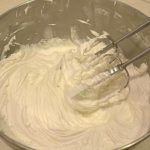3. Stroke
The most common symptom of a stroke is a sudden and powerful headache. Sometimes it’s called a “brain attack” because the blood flow to an area of the brain is cut off, leaving brain cells with a lack of oxygen and possibly dying. Dying brain cells can result in loss of memory and muscle control. Knowing the signs of a stroke can help you prevent it. Many people confuse a heart stroke with a heart attack and delay treatment in order not to bother their family and friends. However, better safe than sorry. Here are the signs:
— Numbness or weakness of the face, arm, or leg on one side of the body.
— Trouble walking, understanding, and slurred speech.
— Sudden, severe headache.
— Inability to see in one or both eyes.
- Immediately call 911 as it’s always the fastest way to save a victim’s life and get the right treatment. Emergency medical services can start treatment on the way to the hospital and are trained to revive someone whose heart has stopped.
4. Coronary heart disease
Coronary heart disease (CHD), or ischaemic heart disease, is a narrowing of the coronary arteries that supply the heart with oxygen and blood. If the blood is completely blocked, a heart attack can occur. Studies have shown that taking a low-dose aspirin every day may help prevent heart attacks and strokes for people at the age of 50 and over who are at risk of heart disease. The signs are as follows:
— Angina, or chest pain, usually occurs in the middle or on the left side of the chest.
— Shortness of breath may occur if your heart doesn’t pump enough blood according to your body’s needs.
— Heart failure. Due to reduced blood flow (or a heart attack), it may become too weak to pump enough blood to meet the body’s needs.
- The first step is emergency medical services.
- If you don’t lead a healthy lifestyle, change it.
- Mind what you eat, and consult your doctor about a heart-healthy diet.
5. Arrhythmia
Arrhythmia (irregular heart rhythm) refers to any change from the normal cardiac rhythm that makes your heart beat too fast or too slow. Some patients may feel no symptoms, and, in this case, an EKGwill help a doctor detect an arrhythmia. People with a healthy heart may have a heart rate of between 60–100 beats per minute when resting. The symptoms of this disease depend on the type of arrhythmia:
Tachycardia (heart beats quicker than normal) symptoms:
— Dizziness or feeling light-headed
— Fainting or almost fainting
— Sudden weakness
— Difficulty breathing
Bradycardia (heart beats slower than normal) symptoms:
— Angina or a chest pain
— Trouble concentrating
— Feeling of tiredness
— Sweating
- Call emergency medical services right away.
- Provide CPR if you know how to do it. If there’s no one nearby trained in it, provide hands-only CPR.
6. Heart failure
Heart failure happens when your heart doesn’t pump blood as it should. It can be caused by narrowed arteries in your heart or high blood pressure, making your heart too weak to pump blood properly. Heart disease affects nearly 6 million Americans. Approximately 670,000 people at the age of 65 are diagnosed with heart failure every year. It is caused by many conditions that damage the heart muscle. The symptoms can be:
— Exercise intolerance
— Racing heart
— Sore throat
— Swelling in the ankles
— Loss of appetite
— Fluid and water retention
- Call your local emergency medical services.
- If a patient is not allergic, let him chew and swallow an aspirin.
- Take nitroglycerin, if prescribed.
- Begin CPR if the person is unconscious.
Do you know how to administer first aid without harming a patient? Here are the most common mistakes.
Don’t begin mouth-to-mouth if a person has had a heart attack. Instead, use chest compressions. Use mouth-to-mouth only if children collapse or when there’s a case of near-drowning, drug overdose, or carbon monoxide poisoning.
By giving a dehydrated person soda or anything else to sip, you’re making everything even worse as these drinks can only deteriorate the state of their health. However, water can change the situation for the better.
Don’t apply ice directly to the skin in case of a bruise. Instead, put a thin barrier (like a cloth) between the skin and the ice for 20 minutes, and then remove it. Wait for 20 minutes, and repeat the procedure. Applying this several times will give the best results.
Don’t throw back your head when having a nosebleed because the blood will drain into the back of your throat, causing a cough and hard breathing. Instead, keep your head in a neutral position with your chin parallel to the ground, and pinch your nose. This procedure will provide direct pressure.
If you don’t want someone who’s choking to hurt themselves, forget about slapping them on their back. This can provoke the food (or anything else) to pass further down into their trachea. Instead, stand behind the choker, lean them forward, wrap your arms around their waist, and whack them between the shoulder blades 5 times with the heel of your hand. After that, set them straight, and with the thumb-side of your fist above their belly button, quickly pull your fist in and up.
Rubbing alcohol reduces the temperature of the skin because it dries very quickly. But it can cause overcooling and shivering. And if the skin absorbs the alcohol, it’ll lead to alcohol poisoning. Instead, remove excessive clothing and take fever-reducing drugs.
source bright side












